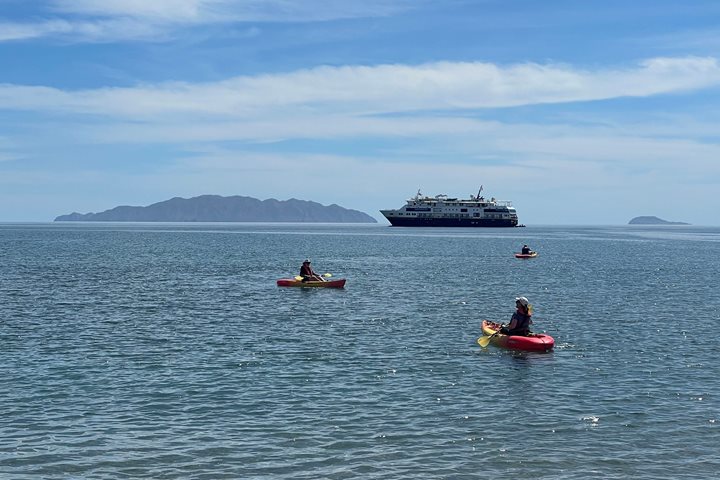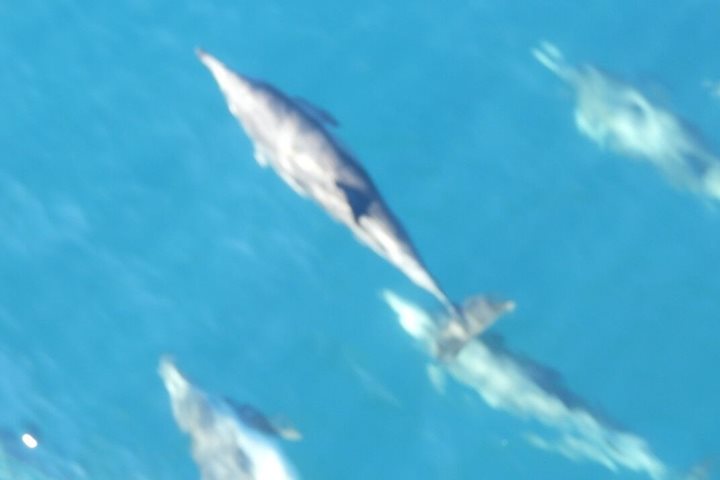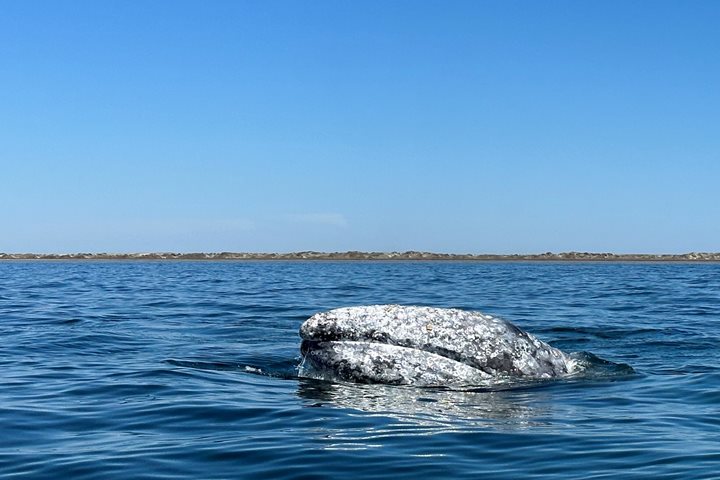After having sailed south and crossing the Tropic of Cancer during the night, National Geographic Venture started a new day sailing off the southernmost portion of the peninsula of Baja California, inside the tropics. The area is known as the Capes region because of several famous and iconic landmarks like Cabo Pulmo, San Jose del Cabo, and Cabo San Lucas. It is also one of the main breeding and calving grounds of humpback whales in the North Pacific. We dedicated most of the day to look for and watch those magnificent creatures.
Shortly after sunrise, we discovered a groups of several humpbacks splashing around and being very active at the surface, throwing their tails or heads out in the air, lifting their 15-feet-long pectoral fins and even breaching. Quite a show and a great display of strength that sometimes seemed like a bunch of teenagers thrashing around, and that’s actually what was possibly happening. Humpback whale males compete during the breeding season at their winter grounds, physically pushing and beating each other in an effort to be the one who is going to gain the ladies’ favors. We spent the whole day watching whales, seeing spouts, close or distant, in pretty much all directions. However, some of those blows looked a bit different. A closer inspection revealed not humpbacks but grey whales! Although most of the grey whales tend to congregate a bit farther north in the middle part of the peninsula’s Pacific side, some individuals enter the Sea of Cortez and can be spotted in the Capes region.
The open waters may seem like an empty place devoid of life for the untrained eye, but there is always something exciting to see. Sometimes a big splash gives away the acrobatic jump of a Mobula ray or a blacktip shark. The occasional sea turtle at the surface made everyone on deck excited, as did the single 6-feet-long hammerhead shark that swam by the ship’s bow. Numerous flying fish went airborne close to us while trying to escape the schools of black skipjack tunas that leaped out of the water trying to catch them, just to end their aerial displays in the beak of a few lucky magnificent frigatebirds.
We also saw another aspect of the peninsula, that of touristic developments now part of the peninsula’s modern reality. Numerous resorts, golf courses, condos, and yachts are prevalent throughout the region. The sight of three huge cruise ships at Cabo Sab Lucas made us appreciate even more our beautiful expedition ship and our time exploring Baja California.
Carlos Navarro, Naturalist and Expedition Diver.
IMAGE: A humpback whale breaching at the Capes region of Baja California Sur. Photo by Carlos Navarro







